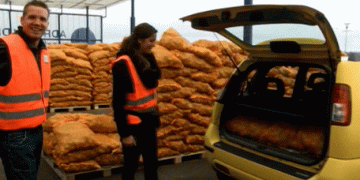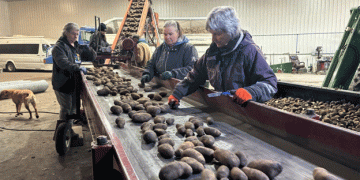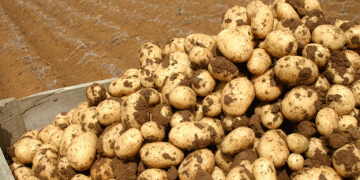Potatoes and onions have long been staples in Indian households, forming the backbone of many traditional dishes. However, recent spikes in their prices have made them increasingly scarce in kitchens across the country. According to government data, prices surged on August 28, 2024, and the situation remains volatile. Despite some stabilization, potatoes and onions, along with other vegetables, continue to challenge both consumers and producers.
Understanding the Price Surge
The most significant increase in potato and onion prices can be attributed to several factors. A major reason is the inconsistent rainfall, which has led to poor harvests in key agricultural states. For instance, in Madhya Pradesh, unpredictable weather patterns have damaged onion crops, leading to a supply shortage and driving up prices. In Delhi’s Azadpur Mandi, one of the largest vegetable markets in Asia, onions have soared to ₹52 per kilogram, while potatoes are now trading at ₹38 per kilogram. Other vegetables have followed suit, with cauliflower at ₹90 per kilogram, ladyfinger at ₹57, and ginger peaking at ₹240 per kilogram.
The price rise isn’t limited to Delhi. In Lasalgaon, Maharashtra, which hosts India’s largest wholesale onion market, onion prices have reached a two-year high. Last week, premium-quality onions were auctioned at ₹4,900 per quintal. When transportation costs are factored in, onions arriving in Delhi are even more expensive, making the capital one of the costliest places to purchase these essential ingredients. Similar challenges are faced in other states, exacerbating the situation nationwide.
Why Are Prices Rising?
The current crisis can be traced back to several root causes, but weather disruption remains the primary factor. The monsoon season in 2024 saw below-average rainfall in many regions, leading to crop damage. This affected not just onions and potatoes but also other vegetables, reducing overall supply in wholesale markets. Anil Malhotra, General Secretary of the Vegetable Traders Association in Azadpur Mandi, points out that these weather-induced shortages have severely impacted production in states like Maharashtra and Madhya Pradesh, which are key suppliers of onions to the rest of the country.
Supply chain issues also contribute to price volatility. Higher transportation costs due to rising fuel prices further complicate the situation, pushing up prices from farm to market. In this environment, even marginal increases in production costs ripple through the entire supply chain, impacting retail prices.
Impact on Kitchens and Farmers
For consumers, especially those in urban areas, these price hikes are starting to limit access to essential vegetables. With onions and potatoes becoming more expensive, households are adjusting their menus, often cutting down on purchases or switching to alternative vegetables. While vegetarian households reliant on onions are particularly affected, even those who follow a sattvic diet find their options shrinking as prices of other vegetables also rise.
Farmers, on the other hand, are facing mixed fortunes. While higher prices can mean better returns for those who have managed to harvest good-quality crops, many are struggling with lower yields and damaged produce due to adverse weather conditions. The increasing cost of inputs, such as fertilizers and transportation, further complicates their ability to benefit from the higher market prices.
The situation in wholesale markets like Azadpur and Ghazipur in Delhi, and Lasalgaon in Maharashtra, reflects the nationwide trend of soaring vegetable prices. Farmers are urged to adapt by exploring alternative crops or enhancing their resilience to weather changes through better agricultural practices and improved storage facilities.
What Lies Ahead?
As we head into the latter part of the year, it remains uncertain whether prices will stabilize or continue their upward trend. Much depends on the upcoming harvests and weather conditions. Government interventions, such as import controls and subsidies, could help stabilize prices, but these are short-term measures. In the long run, the agricultural sector must focus on building resilience to climate change and improving supply chain efficiency.
The rising cost of potatoes, onions, and other vegetables highlights the fragility of India’s agricultural supply chain, particularly in the face of climate disruptions. Farmers and policymakers must work together to develop sustainable solutions that can withstand the challenges posed by erratic weather patterns and market fluctuations. For consumers, the message is clear: prepare for continued volatility in vegetable prices and explore alternatives where possible.






